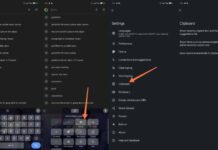Forex is a virtual market that does not have a single center; currencies are exchanged, or contracts are concluded there, in order to make a profit. Since you can not only earn money on Forex, but also secure your assets, this market has many participants. Commercial banks invest in FX to gain control over currency risks; they can invest on behalf of the company or on behalf of clients.
Corporations use FX to settle with foreign companies within the framework, as well as to hedge risks. Investment funds (as well as insurance companies and other funds) invest in FX for diversification, that is, they allocate capital by investing money in various assets, including currency.

Retailers use Forex for personal purposes. They buy currency pairs to make instant profits; to do this, they open an account with stock brokers. To get started, beginners should take Forex trading courses, which are available for free on the AvaAcademy website. You will gain basic online trading skills, study the market, understand what futures, forwards, and options are, learn how to use CDF contracts, and much more.
To become an FX participant, you need to gain fundamental knowledge. Otherwise, the risks of monetary losses are high. Next, we list the main participants of the FX:
- commercial banks;
- corporations;
- investment funds;
- retail traders, etc.
Benefits of Forex
As we can see, FX attracts many different participants. This is because this market has several important qualities. First, it is accessibility. Almost anyone can register and start trading. It is not necessary to be a representative of the company; private entrepreneurs and individuals are also accepted. Secondly, there is liquidity; that is, you can quickly sell (cash out) your assets at the market price.
Third, it is the potential profit. Everyone can earn money if they guess the change in quotes in a certain period of time. It is difficult to predict, but if you are lucky, the profit will be credited to the account immediately. Fourth, it provides round-the-clock work. You can buy or sell currency pairs without paying attention to the time on the clock. It is suitable for those who live in remote regions or work at night.
There are three sessions: Asian (Tokyo center), European (London center), and American (New York center). Forex is closed two days a week, but some brokers allow trading even on weekends, while limiting the choice of trading pairs. It should be noted that EUR-USD and GBP-USD are most often available.
Fifth, it is the availability of hedging. This strategy is rarely used by private traders; it is more suitable for large companies. The point of hedging is that you can offset losses from one trade by making a profit from another transaction. This is a kind of insurance against a sharp drop in the value of a particular currency.
Forex Trading Strategies
During the trading courses, you will learn about the basic Forex trading strategies. Now, we will briefly discuss the main tactics used by the participants when playing for an increase or decrease in quotes.
Day trading is the most common way of trading: you open several trades (usually from 1 to 10) and try to make a profit using minor fluctuations in the price of a currency during the day.
Swing trading is aimed at medium-term trends, that is, contract positions are held for several days or 1-2 weeks, waiting for the price of the currency to rise or fall (if you have chosen a short position).
Scalping is less popular than day trading; it is less profitable, but safer. The essence of scalping is that you make quick trades to make a profit instantly, in a few seconds.
Trend following is suitable for those who have enough time. The essence of TF is that you study the trends that have formed in the market and try to make money at a long distance. In this case, you are interested in the price change over several weeks, a month, a quarter, or over a longer period of time.
Range trading. This strategy is more complex than the above and requires considerable knowledge and skills. The point of RT is that a trader buys assets at the support level and sells them at the resistance level, while maintaining a stable value range. It is recommended to use RT only if you have mastered other tactics well and have learned how to apply them. Act from simple to complex, and then you have a higher chance of becoming a successful trader.
Leverage

You can also gain control over larger positions if you use leverage. In this case, the broker contributes part of the funds for you, but they must be sure that you will cover the costs in case of failure, so you must have a certain amount in your account before opening a trading account.
We recommend that you take free courses at AvaAcademy and learn the basic concepts of FX, in which case your actions will be more conscious and logical. Try trading in demo mode to understand the nuances of trading on the exchange.


















